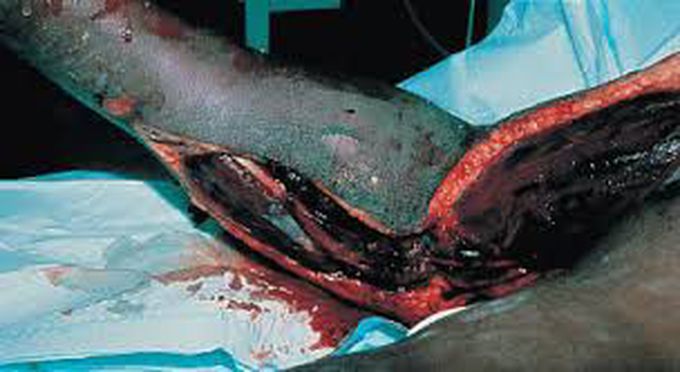


Clostridial Gas Gangrene: Diagnosis and Management
Gas gangrene is a soft tissue infection with the mortality rate of up to 100%. The causative agent of gas gangrene is an anaerobic, spore-forming species of Clostridium. Patients with gas gangrene usually have history of trauma; it may also arise secondary to malignancy, abdominal pathologies, and post-operatively. The most common gas gangrene causing Clostridium is Clostridium perfringens; it is typically acquired in case of trauma in deep tissues. As a consequence of toxin released from bacteria, the blood vessels are severely occluded, hence hypoxia of the affected tissue may occur. The patient with gas gangrene presents with systemic symptoms such as fever, tachycardia, confusion, and hypotension. Local signs may involve erythema and pain. However, these symptoms are not always seen in the patients. For imaging purposes, Ultrasound, X-ray, CT-scan, or MRI can be conducted. X-ray may help in visualization of gas in tissues. Biomarkers such as CRP, IL-6, and procalcitonin may help in forming the diagnosis. MRI is used for imaging of soft tissues. Prompt surgical intervention ensures good prognosis of the patient; this surgery typically involves repeated debridement of infected tissue. Combination of antibiotics are administered in case of gas gangrene. Commonly used combinations are piperazillin‐tazobac or ampicillin‐sulbactam, in combination with clindamycin or a carbapenem. The guidelines formulated in US suggest recommending vancomycin or linezolid plus piperazillin‐tazobac or carbapenem or ceftriaxone‐metronidazole Gas gangrene is a life-threatening condition if not treated timely due to the complications that may arise from it. These complications are worsened by advance age, infection extending to mediastinum, and shock. Source Clostridial Gas Gangrene ‐ A Rare but Deadly Infection: Case series and Comparison to Other Necrotizing Soft Tissue Infections https://onlinelibrary.wiley.com/doi/full/10.1111/os.12804 Image via https://www.tumblr.com/tagged/gas-gangrene


